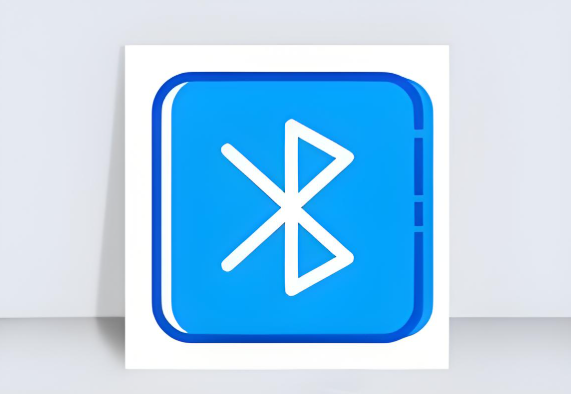Amid the explosive growth of Internet of Things (IoT) devices, battery life has become a core challenge hindering the technology's widespread adoption. From environmental sensors to industrial monitors, from asset tags to wearables, tens of billions of devices rely on coin-cell batteries or energy harvesting technologies to maintain years of operation. The high power consumption of traditional wireless communication technologies (such as Wi-Fi and Classic Bluetooth) makes it difficult to meet the demand for "ultra-long standby" capabilities. Against this backdrop, Bluetooth Low Energy (BLE), with its microampere standby current and millisecond wake-up time, has become the communication protocol of choice for IoT devices.

Physical Layer Optimization: Reducing Radio Frequency Active Time
The core strategy of Bluetooth Low Energy is to replace long connections with short pulses. Its physical layer design focuses on reducing the radio frequency module active time:
High-Frequency Modulation and Narrow Bandwidth: BLE uses Gaussian Frequency Shift Keying (GFSK) modulation technology, supporting a base rate of 1 Mbps (expandable to 2 Mbps in Bluetooth 5.0+), with data packets only one-eighth the length of Classic Bluetooth. Shorter transmission times directly compress the RF module activation period from hundreds of milliseconds to milliseconds, significantly reducing instantaneous power consumption.
Dynamic Power Control: BLE devices automatically adjust transmit power based on signal strength. In close-range communication scenarios, transmit power can be reduced from +4dBm to -20dBm, reducing power consumption by 25 times. The LE Power Control (LEPC) protocol introduced in Bluetooth 5.3 further optimizes this process, dynamically adjusting power based on real-time feedback on link quality to avoid energy waste caused by "over-transmission."
Fast Frequency Hopping and Interference Resilience: BLE retains the classic Bluetooth 2.4GHz frequency band but expands the number of channels to 40 (Bluetooth 5.0+) and increases the frequency hopping speed to 1600 hops/second. Although frequency hopping itself consumes energy, by reducing retransmissions due to interference, overall energy consumption is reduced, a significant advantage particularly in complex electromagnetic environments.
Protocol Stack Streamlining: Removing Redundant Functionality
The Classic Bluetooth protocol stack consists of over ten layers, including the physical layer, link layer, host controller interface, and logical link control layer. This complexity leads to high hardware costs and power consumption. BLE achieves a revolution in energy efficiency by streamlining the protocol stack:
Core Protocol Focus: BLE removes non-essential protocols such as audio and file transfer from Classic Bluetooth, retaining only the Generic Attribute Profile (GATT) and Attribute Protocol (ATT). GATT encapsulates data into "services" and "characteristics," simplifying data exchange and reducing protocol parsing energy consumption.
Simplified Connection Process: Classic Bluetooth requires a three-step process of "inquiry-pairing-connection," which takes several seconds. BLE, through its "advertisement-scan-connection" model, reduces connection establishment time to 3-5 milliseconds while also reducing control channel overhead.
Asynchronous Communication Mechanism: BLE supports a "connectionless advertising" mode, allowing devices to send data in one direction without establishing a connection, resulting in a standby current as low as 0.1μA. This feature is extremely advantageous in scenarios such as indoor positioning and advertising push, significantly extending device battery life.
Dynamic Connection Management: Waking Up Devices on Demand
The essence of Bluetooth Low Energy lies in "keeping devices asleep as much as possible." Its connection management strategy is implemented through three major mechanisms:
Adaptive Connection Interval: BLE devices can dynamically adjust data transmission frequency, setting the connection interval based on scenario requirements (e.g., from 1 second to 100 milliseconds). By optimizing the wake-up cycle, devices can spend over 99% of their sleep time, reducing power consumption to microwatts.
Improved Sleep Clock Accuracy: BLE introduces a high-precision Sleep Clock Accuracy (SCA), allowing devices to synchronize their time with an accuracy of ±50ppm while asleep. In comparison, Classic Bluetooth's clock accuracy reaches ±250ppm, requiring more frequent wake-ups to maintain synchronization, resulting in increased power consumption.
Flexible Multiple Role Switching: BLE devices can simultaneously act as both "master" and "slave," dynamically switching roles based on the scenario. For example, when a sensor receives a command as a slave, it can briefly wake up to complete communication and then immediately go back to sleep. When acting as a master managing multiple devices, a "polling" mechanism can optimize the wake-up sequence and reduce overall activity time.
Hardware Collaborative Innovation: Chip-Level Energy Efficiency Optimization
The implementation of Bluetooth Low Energy (BLE) relies on collaborative innovation at the hardware level. Modern BLE chips further reduce energy consumption through the following technologies:
Low-power architecture design: Mainstream BLE chips utilize an ARM Cortex-M series core, integrating a radio frequency front-end, power management unit, and flash memory. Single-chip power consumption is as low as 1μA (in deep sleep mode). Some chips utilize dynamic voltage scaling to adjust the core voltage in real time based on task load, further reducing energy consumption.
Energy harvesting technology integration: Some BLE chips support energy harvesting from ambient light, thermal gradients, or RF signals, enabling "battery-free" operation. For example, sensors powered by mechanical energy or indoor light can support periodic data reporting and a battery life of over 10 years.
Balancing security and power consumption: BLE uses the AES-128 encryption algorithm to ensure data security, but the encryption process consumes energy. The LE Secure Connections protocol introduced in Bluetooth 5.2 optimizes the key exchange process, reducing encryption authentication time by 70% while maintaining the same security level, achieving a balance between security and energy efficiency.
Bluetooth's low-power revolution is essentially about reshaping wireless communication logic through precise control of energy flow. From millisecond-level transmission at the physical layer to the minimalist design of the protocol stack, from dynamic connection management to chip-level energy efficiency optimization, each technological breakthrough points to a single goal: completing necessary tasks with minimal energy. Today, BLE has penetrated countless industries, including smart wearables, smart homes, the Industrial Internet of Things, and healthcare, supporting the long-term operation of billions of devices.